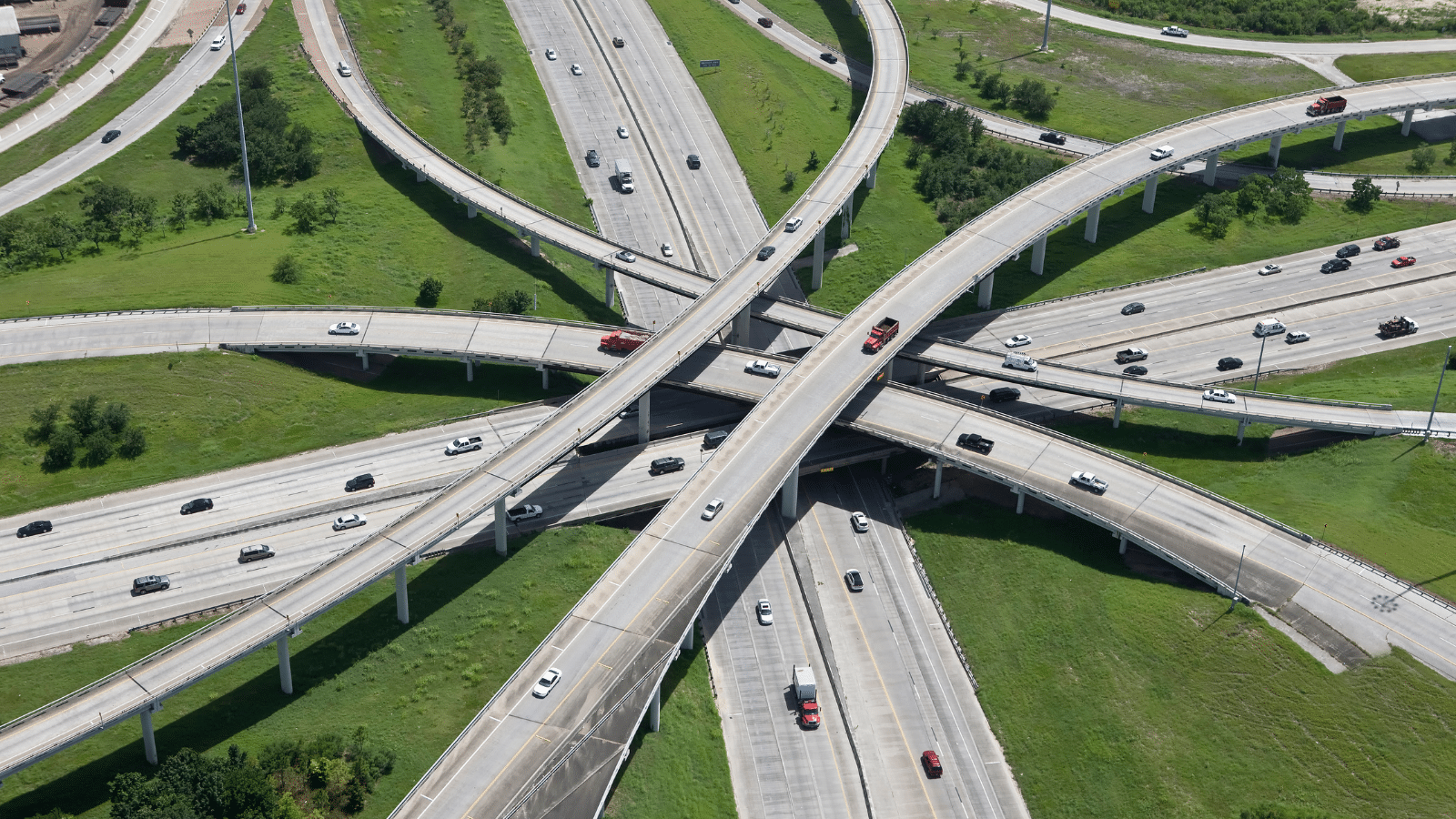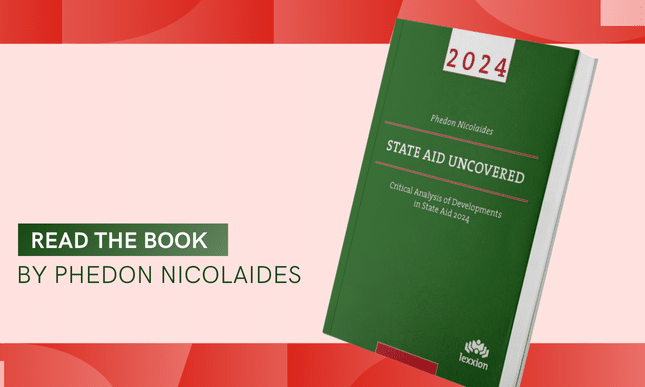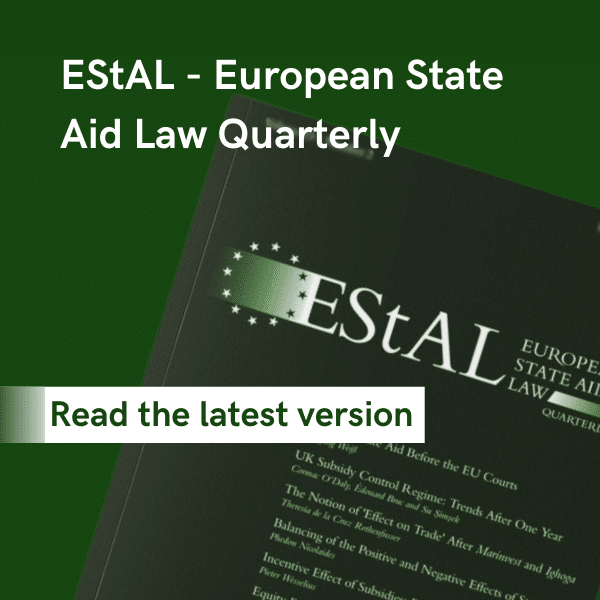
Introduction
Normally, each weekly article reviews just one court judgment or Commission decision. This article deviates from normal practice. It reviews three recent Commission decisions on three different French measures of support of port infrastructure:
SA.115739: Direct inland waterway access to Port of Le Havre [April 2025][1]
SA.113270: Investment aid to the port of Dunkirk [December 2025][2]
SA.111060: Modernisation of the Naye terminal at the Port of Saint-Malo [September 2024][3]
What makes these Commission decisions interesting is that they demonstrate in detail how the minimum necessary amount of State aid is to be calculated through a funding gap analysis, how to take into account the residual value of the infrastructure at the end of its economic life and how to treat infrastructure that is not economic in nature.
The three projects
- Project objectives
Port of Le Havre: The objective was to enable more vessels to have direct access to the port, to increase the amount of cargo that is transferred to inland waterways and reduce congestion and pollution.
Port of Dunkirk: The objective was the construction of a new terminal for the purpose of improving the role of the port as a logistics hub.
Port of Saint Malo: The project aimed to modernise obsolete infrastructure and berths at the Naye terminal so as to accommodate larger ferries and process passengers and freight more efficiently, improve public roads and access to the terminal and reduce traffic decongestion.
- Beneficiaries
Port of Le Havre: The direct beneficiary was HAROPA Port, a state-owned entity that oversaw the operations of the ports of Le Havre, Rouen and Paris. It granted concessions to commercial companies in those ports and also provided direct port services itself.
Port of Dunkirk: The direct beneficiary was the state-owned port authority of Dunkirk which was the owner of the port. It acted as concession giver and land lessor to companies active in the port of Dunkirk and provided direct port services to vessel owners.
Port of Saint-Malo: The direct beneficiary is the port authority of the region of Brittany that owns and manages the port.
- The infrastructure
HAROPA port (Port of Le Havre): The project consisted of building a channel protected by a dyke to create a direct access from the Seine river to the port of Le Havre and to the North Sea. The total cost was EUR 197 million.
Port of Dunkirk: The project concerned the construction of a new container terminal at a total cost of EUR 303 million, including costs for the protection of natural breeding habitat for birds. In addition to the construction of the terminal, the project included dredging of navigation channels and extension of rail connections. However, the project did not include other construction work such as roads and bicycle paths open to the public outside the port.
Port of Saint-Malo: The project included modernisation of the Naye terminal and its berths, dredging of the port, improvement of access roads to the terminal and creation of pedestrian and cycling areas.
- Budget
HAROPA port: The total investment costs of EUR 197 million would be financed by i) a non-repayable grant of EUR 86.1 million by the Normandy region, ii) a non-repayable grant of EUR 23.6 million by the French government; iii) an own contribution by the port authority of EUR 82.4 million and iv) a grant to EUR 5 million from CEF, a public entity. Out of the total investment costs, only EUR 109.7 million were notified as State aid.
Dunkirk port: The total investment costs of EUR 303 million would be funded by: i) a loan of EUR [200-240] million at a rate of about 3.5%, which would be provided by the French public bank Caisse des Dépôts et Consignations [CDC] whose resources are classified as state resources, ii) a non-repayable grant of EUR 87 million by the French government and iii) an own contribution of EUR [6-16] million. The loan contained an aid element that was calculated as the difference between the actual rate of about 3.5% and the average market rate of about 4% that was obtained from three commercial banks. The aid element was also confirmed with the use of the Commission’s reference rate of about 4.5% that corresponded to the credit rating of the port owner. The total amount of aid was EUR 126.9 million, consisting of EUR 87 million of the grant and EUR 39.9 million of the nominal GGE in the loan.
Port of Saint-Malo: The total investment costs of the project were EUR [100-130] million. The project would be funded by the Region in two capacities: as a port manager and as a public authority in the form of a non-repayable grant that qualified as State aid and whose amount was EUR 102 million. Certain parts of the project related to public remit tasks whose funding did not qualify as State aid [e.g. public road network, police and customs buildings]. The total amount of State aid and the cost of the non-economic parts was EUR [105-125] million. In other words, the own contribution generated from port fees that was used to fund economic activities was about EUR 5 million.
Funding gap
HAROPA port: The NPV, estimated over a reference period of 28 years, was – EUR 166 million. The costs included construction expenses, amelioration of environmental impact and maintenance expenses. The revenue would be generated by service and concession fees. The discount rate [WACC] of 4.5% was in line with the 4% rate recommended by the Commission in its Guide for Cost-Benefit Analysis of Investment Projects in the context of cohesion policy.
Dunkirk port: The NPV, estimated over a period of 35 years, was – EUR 127 million. The revenue would be generated by port fees paid by vessels, fees paid by the eventual operator and the sale of sediments obtained from dredging. The discount rate [WACC] was 6.28%.
Saint-Malo port: The NPV, estimated over a period of 33 years, was – EUR 102 million. Costs that would were not avoidable such as administrative expenses were excluded from the calculation. The revenue would be generated by port fees. The discount rate [WACC] was 9%.
Project costs & revenue, State aid and funding gaps
| HAROPA port | Dunkirk port | Saint-Malo | |
| Period | 28 years | 35 years | 33 years |
| Discount rate | 4.5% | 6.28% | 9% |
| [costs nominal]
Costs discounted |
[197 mn]
186 mn |
[303 mn]
264 mn |
[105-125 mn] [105-125 mn] |
| Residual value: nominal & discounted | … | 22-33 mn
5-10 mn |
|
| Revenue [including discounted residual value] | 20 mn* | 137 mn | [3-23 mn] |
| Funding gap | 166 mn | 127 mn | 102 mn |
| Amount of State aid | 110 mn | 127 mn | 102 mn |
* The NPV calculation did not include any residual value because it was difficult to determine the market value of public infrastructure [the channel] and because its life period was expected to be much longer than 28 years. An alternative calculation over a 50-year period also showed a negative NPV of EUR 131.3 million.
Existence of State aid
The Commission examined the possible presence of State aid at three levels: the owner, the port operators and the port users. However, the public funding for the construction of public roads, infrastructure for pedestrians or cyclists and infrastructure for police and customs was not State aid because that infrastructure was not to be used for economic activities.
Aid at the level of the owner: For all three measures, the Commission concluded that the owners were undertakings and that all the criteria of Article 107(1) TFEU were satisfied. Therefore, the public funding constituted State aid.
No aid at the level of the port operators: The Commission found that the port infrastructure was not specifically designed for any operator, that operators would be granted concession contracts on market terms and that existing contracts would be adapted to reflect the improvement of the infrastructure.
In particular for the port of Dunkirk, the Commission considered that the selection of a terminal operator through a competitive procedure would not confer an advantage in the meaning of Article 107(1) TFEU. The procedure would be in conformity with points 89-96 of the 2016 Commission Notice on the Notion of State aid.
With respect to the port of Sain-Malo, the Naye terminal was operated by a company called Edeis under a concession agreement which entered into force in January 2020 for a period of 13 years. The contract was awarded through a public procurement procedure, in which several candidates submitted their bids. According to the concession agreement a component of the fee paid by Edeis would be increased when the terminal modernisation would be completed. When the new tender procedure would be organised, the new concessionaire would pay fees fully reflecting the improved infrastructure.
No aid at the level of port users: In the case of Le Havre, users would pay a fee for navigating through the new channel even if they would not access the port. The fee would include an appropriate share of the cost of the improved infrastructure.
In the case of the ports of Dunkirk and Saint-Malo, users such as shipowners would have access on non-discriminatory terms and would pay a fee at market rates comparable to the rates of similar ports.
Compatibility assessment
The Commission assessed the measures directly on the basis of the Treaty and in particular, Article 107(3)(c).
It found that all three measures promoted the development of an economic activity, that aid had an incentive effect [since the funding gap was negative], that the aid measures did not violate other provisions of EU law [operators would be selected in accordance with procurement rules], that there was a need for state intervention to remedy market failure [e.g. to lower pollution and alleviate congestion], that the aid was appropriate and proportional [it did not exceed the funding gap], and that it would not distort trade and competition to an undue extent.
[1] The full text of the Commission decision can be accessed at:
https://ec.europa.eu/competition/state_aid/cases1/202521/SA_115739_62.pdf
[2] The full text of the Commission decision can be accessed at:
https://ec.europa.eu/competition/state_aid/cases1/202520/SA_113270_110.pdf
[3] The full text of the Commission decision can be accessed at:
https://ec.europa.eu/competition/state_aid/cases1/202447/SA_111060_80.pdf



